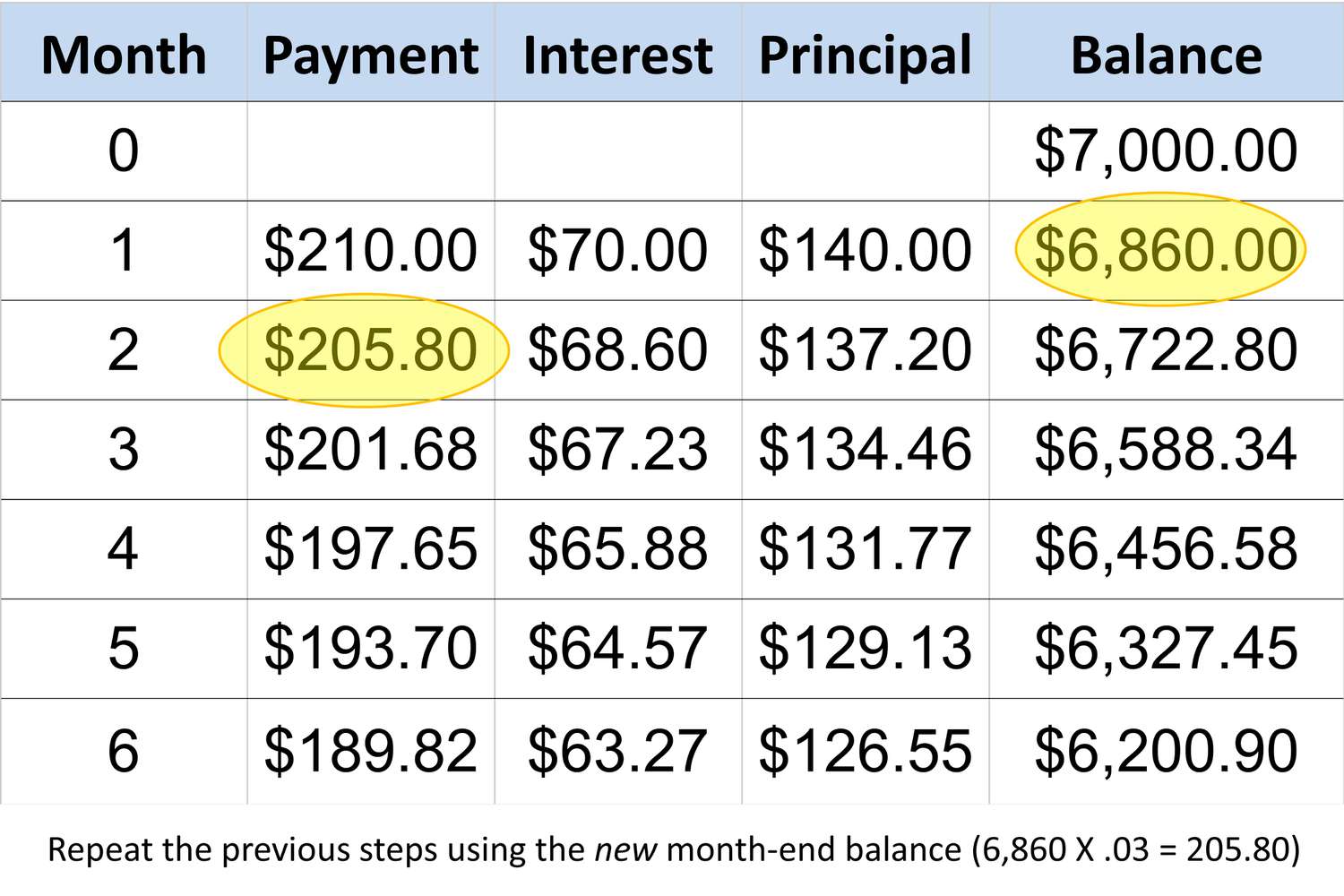Home>Finance>How To Start Your Own Credit Card Processing Company


Finance
How To Start Your Own Credit Card Processing Company
Published: October 26, 2023
Start your own credit card processing company and dive into the finance industry with this comprehensive guide. Learn the ins and outs of setting up and managing a successful business.
(Many of the links in this article redirect to a specific reviewed product. Your purchase of these products through affiliate links helps to generate commission for LiveWell, at no extra cost. Learn more)
Table of Contents
- Introduction
- Step 1: Research and Planning
- Step 2: Legal and Regulatory Requirements
- Step 3: Choosing a Business Model
- Step 4: Sourcing Equipment and Technology
- Step 5: Partnering with Banks and Processors
- Step 6: Building a Team
- Step 7: Setting Up Merchant Accounts
- Step 8: Marketing and Promoting Your Services
- Step 9: Providing Excellent Customer Service
- Step 10: Scaling and Expanding Your Business
- Conclusion
Introduction
Starting your own credit card processing company can be a lucrative and rewarding venture in the finance industry. As more businesses and consumers rely on credit and debit cards for their financial transactions, the demand for reliable payment processing services continues to grow. Whether you are an entrepreneur looking to capitalize on this opportunity or an industry professional with expertise in finance, launching your own credit card processing company can open doors to a thriving business.
However, entering the credit card processing industry requires careful planning, understanding of the regulatory landscape, and the ability to provide exceptional service. In this article, we will guide you through the necessary steps to start your own credit card processing company and position yourself for success.
Before diving into the detailed steps, it is important to note that starting a credit card processing company is a complex endeavor that requires in-depth knowledge of the industry, financial regulations, and technology. It is essential to conduct thorough research, seek professional advice, and stay up-to-date with the latest trends and developments in the finance and payment processing sector. With careful preparation and strategic execution, you can turn your ambition into a thriving business.
Now, let’s explore the ten essential steps to get your credit card processing company off the ground:
Step 1: Research and Planning
Before diving headfirst into starting your credit card processing company, it is crucial to invest time in thorough research and planning. This step will ensure that you have a solid foundation and a clear understanding of the industry, market demand, competitors, and target audience.
Start by identifying your target market. Consider the types of businesses you want to cater to, such as small local retailers, e-commerce businesses, or international enterprises. Understanding your target market will help shape your business model and guide your marketing strategies.
Next, conduct market research to analyze the competition. Identify other credit card processing companies in your target area or niche and assess their services, pricing, and reputation. This analysis will help you differentiate your company and identify areas for improvement or innovation.
Additionally, staying informed about industry trends and developments is crucial for long-term success. Keep an eye on new technologies, emerging payment methods, and regulatory changes that may impact the payment processing landscape. This knowledge will allow you to adapt and stay ahead of the curve.
Once you have a clear understanding of the market and competition, develop a comprehensive business plan. Outline your company’s mission, vision, and goals, as well as your marketing and sales strategies. Consider financial projections, such as revenue, expenses, and growth potential. A well-crafted business plan will serve as a roadmap for your credit card processing company and help secure funding from investors or financial institutions.
It’s important to note that you should also consider the expenses involved in starting a credit card processing company, such as acquiring equipment, technology, and compliance with regulatory requirements. Conduct a detailed cost analysis to ensure you have adequate funding to support your venture.
Lastly, consider seeking advice from industry experts, mentors, or consultants who can provide invaluable guidance and insights based on their experience. They can help you refine your business plan, identify potential challenges, and provide recommendations to ensure your credit card processing company succeeds.
By investing time and effort into thorough research and planning, you will lay a strong foundation for your credit card processing company and increase your chances of long-term success.
Step 2: Legal and Regulatory Requirements
Compliance with legal and regulatory requirements is a crucial step when starting your credit card processing company. The finance industry is highly regulated to protect consumers, ensure fair business practices, and prevent fraudulent activities. To operate legally and ethically, you must navigate through various licensing, registration, and compliance processes.
The specific legal and regulatory requirements may vary depending on your jurisdiction, so it is essential to consult with legal professionals familiar with the finance industry in your region. However, here are some common steps to consider:
- Business Entity: Decide on the legal structure of your credit card processing company. You can choose to operate as a sole proprietorship, partnership, corporation, or limited liability company (LLC). Each structure has its own legal implications and tax obligations, so consult with an attorney or accountant to determine the best option for your business.
- Licensing: Research the licensing requirements for credit card processing companies in your jurisdiction. Determine whether you need to obtain specific licenses or permits to operate legally. This may involve submitting an application, paying fees, and undergoing a background check.
- Compliance: Familiarize yourself with the laws and regulations that govern the credit card processing industry. This may include compliance with data security standards, such as the Payment Card Industry Data Security Standard (PCI DSS), as well as anti-money laundering (AML) and know-your-customer (KYC) regulations.
- Partnership Agreements: If you plan to partner with banks or processing networks, negotiate and draft partnership agreements that outline the terms and conditions of the partnership. These agreements should address revenue sharing, liability, termination, and other important aspects of the partnership.
- Customer Contracts: Develop clear and comprehensive contracts for your customers. These contracts should outline the terms of service, fees, dispute resolution mechanisms, and any other relevant information. Ensure that your contracts comply with applicable laws and are fair to both parties.
Remember, compliance is an ongoing process. Stay updated with changes in regulations and industry standards to ensure that your credit card processing company remains in compliance at all times.
By addressing the legal and regulatory requirements from the early stages of your business, you demonstrate your commitment to operating ethically, protecting your customers and their data, and building a reputable credit card processing company.
Step 3: Choosing a Business Model
Choosing the right business model for your credit card processing company is a critical decision that will shape your operations and revenue streams. There are different business models to consider, each with its own advantages and considerations. Here are some common models:
- Independent Sales Organization (ISO): As an ISO, you act as a reseller for a larger payment processor or bank. You can offer a range of payment processing solutions to your clients and earn a percentage of the transaction fees as your revenue. This model allows you to leverage the infrastructure and expertise of established processors.
- Payment Facilitator (PayFac): A PayFac, also known as a payment aggregator, allows businesses to accept payments without the need for individual merchant accounts. As a PayFac, you assume the risk and underwrite merchants, simplifying the onboarding process. You charge a fee or percentage for processing transactions.
- Full-Service Processor: If you have the resources and infrastructure, you can become a full-service processor. This means you handle the end-to-end payment processing for your clients, including merchant accounts, transaction authorization, settlement, and customer support. You have more control over the customer experience and can set pricing and service levels.
- Specialized Niche: Another option is to focus on a specific industry or niche. For example, you can cater to online businesses, high-risk merchants, or specific sectors like healthcare or hospitality. By specializing, you can develop expertise in unique requirements and provide tailored solutions.
When choosing your business model, consider factors such as your target market, resources, expertise, and competitive landscape. Research the pros and cons of each model and determine which aligns best with your goals and capabilities.
In addition to the core business model, consider revenue streams beyond transaction fees. You can explore value-added services such as payment gateways, fraud prevention solutions, analytics, or integrations with popular e-commerce platforms. These additional offerings can diversify your revenue and provide more comprehensive solutions to your clients.
Remember, your choice of business model is not set in stone. As your credit card processing company evolves and the industry changes, you can adapt and modify your model to stay competitive and meet evolving customer needs. Regularly assess the effectiveness of your chosen model and make adjustments as necessary.
By carefully selecting a business model that aligns with your strengths and market demand, you set the stage for a successful credit card processing company.
Step 4: Sourcing Equipment and Technology
Launching a credit card processing company requires the right equipment and technology to efficiently and securely process payments. Investing in reliable equipment and staying up-to-date with the latest payment processing technologies is essential to providing a seamless experience for your clients. Here are some key considerations for sourcing equipment and technology:
- Payment Terminals: Depending on your target market and business model, you may need physical payment terminals to accept card payments. Research and select terminals that are compatible with major card networks and offer features such as contactless payments, NFC capabilities, and EMV chip reader technology.
- Virtual Terminals: If you primarily serve online businesses, consider using virtual terminals. These web-based interfaces allow merchants to process payments from any device with an internet connection. Virtual terminals are particularly useful for e-commerce businesses or those receiving payments over the phone or via mail.
- Mobile Payment Solutions: Mobile payment solutions have gained popularity in recent years. Consider implementing mobile payment technologies that allow merchants to accept payments using smartphones or tablets, either through mobile wallet apps or card readers that connect to mobile devices.
- Payment Gateways: A payment gateway is a critical component of online payment processing. It connects the merchant’s website or application to the payment processing network, securely transmitting transaction data. Research and choose a reputable payment gateway provider that offers robust security features and seamless integration options.
- Data Security Measures: As a credit card processing company, you must prioritize data security to protect sensitive cardholder information. Ensure you have robust security measures in place, such as encryption, tokenization, and compliance with industry standards like the Payment Card Industry Data Security Standard (PCI DSS).
- Software and Integration: Consider the software and systems you need to efficiently manage your operations. Look for user-friendly software that allows you to onboard merchants, track transactions, generate reports, and provide customer support. Ensure your software integrates with your chosen terminals, payment gateways, and other third-party systems.
When sourcing equipment and technology, research reputable suppliers and providers in the payment processing industry. Consider factors such as pricing, customer support, compatibility, and scalability. Take the time to test and evaluate different options to ensure they meet your specific needs.
Furthermore, staying abreast of emerging technologies and industry trends is crucial. Payment processing technology is constantly evolving, so regularly assess your equipment and technology stack to ensure you are providing the best solutions for your clients.
By investing in reliable and cutting-edge equipment and technology, you can deliver seamless payment processing experiences and position your credit card processing company as a trusted industry player.
Step 5: Partnering with Banks and Processors
Establishing partnerships with banks and payment processors is a critical step in starting a credit card processing company. These partnerships provide you with the infrastructure, support, and credibility needed to operate in the finance industry. Here are some key considerations when partnering with banks and processors:
- Research and Selection: Conduct thorough research to identify reputable banks and payment processors that align with your business model and target market. Look for established institutions with a solid track record of reliability, security, and customer support. Consider their reputation, pricing structures, technology offerings, and the range of services they provide.
- Underwriting: When partnering with banks or processors, you may need to undergo an underwriting process. This involves providing detailed information about your business, financial projections, and compliance measures. The underwriting process helps the bank or processor assess the risk associated with your credit card processing company.
- Revenue Share: Discuss the revenue sharing model with potential partners. Determine the percentage of transaction fees or other revenue streams that will be shared with the bank or processor. Negotiate fair terms that align with your business goals and financial projections.
- Integration: Ensure that the chosen bank or processor offers seamless integration options with your chosen equipment and technology. Compatibility between systems is essential to provide a smooth experience for your clients. Consider factors such as API availability, developer resources, and ease of integration.
- Support and Services: Evaluate the level of support and services offered by the bank or processor. Consider factors such as customer support availability, training resources, and additional value-added services. A supportive partner can provide guidance on compliance, help troubleshoot technical issues, and assist with client onboarding.
- Contracts and Agreements: Once you have selected a bank or processor, negotiate and draft partnership agreements that outline the terms and conditions of the partnership. Address key areas such as revenue sharing, compliance responsibilities, termination clauses, and liability. Review these contracts carefully with legal professionals to ensure they protect your interests.
Remember, building strong relationships with your partners is crucial for long-term success. Maintain open lines of communication, foster trust, and collaborate on strategies to improve services and drive growth.
Additionally, as your credit card processing company grows, you may consider establishing relationships with multiple banks and processors to diversify your risk and expand your service offerings. However, ensure that you have the infrastructure and resources to manage multiple partnerships effectively.
By choosing reputable partners and establishing strong relationships, you can leverage their expertise and infrastructure to provide exceptional payment processing services to your clients.
Step 6: Building a Team
Building a capable and knowledgeable team is crucial when starting your credit card processing company. Your team will be the driving force behind the success of your business, ensuring smooth operations, exceptional customer service, and effective sales and marketing efforts. Here are some key considerations for building a strong team:
- Identify Key Roles: Determine the key roles and skill sets required for your credit card processing company. This may include positions such as sales representatives, customer support agents, compliance specialists, finance professionals, and technical staff. Identify the core competencies needed for each role and create detailed job descriptions.
- Recruitment and Hiring: Develop a recruitment strategy to attract highly skilled professionals to your team. Advertise job openings on relevant platforms, network within the finance industry, and consider partnering with recruitment agencies. Conduct thorough interviews and assessments to ensure you select candidates who align with your company culture and possess the necessary skills and experience.
- Training and Development: Once you have hired your team members, invest in their training and development. Provide comprehensive onboarding that familiarizes them with your company, its values, and its processes. Offer ongoing training and support to ensure they stay updated with industry trends, regulations, and advancements in payment processing technology.
- Team Collaboration: Foster a collaborative work environment where team members can share their expertise and insights. Encourage open communication and teamwork to enhance problem-solving and innovation. Regularly hold team meetings and provide opportunities for cross-functional collaboration.
- Customer Service Excellence: As a credit card processing company, providing exceptional customer service is crucial. Ensure that your team is well-trained in customer service best practices and equipped to handle inquiries, troubleshoot issues, and provide timely and effective solutions. Emphasize the importance of professionalism, empathy, and responsiveness in all client interactions.
- Company Culture and Morale: Promote a positive company culture that values teamwork, accountability, and continuous improvement. Recognize and reward team members for their contributions and achievements. Foster a supportive and inclusive work environment where employees feel valued and motivated to perform at their best.
Building a team is not just about hiring the right individuals; it’s about fostering a cohesive and high-performing unit. Regularly assess the strengths and weaknesses of your team and provide opportunities for professional growth and development. Encourage feedback and implement employee suggestions to continuously improve your team dynamics and productivity.
As your credit card processing company grows, you may need to scale your team to meet increased demand. Stay proactive in identifying talent gaps and recruiting the right individuals to support your company’s growth objectives.
By building a skilled and motivated team, you set the foundation for a successful and sustainable credit card processing company.
Step 7: Setting Up Merchant Accounts
Setting up merchant accounts is a crucial step in establishing your credit card processing company. Merchant accounts allow businesses to accept credit and debit card payments, enabling them to seamlessly collect revenue from their customers. Here are some key considerations when setting up merchant accounts:
- Research Payment Processors: Research and select reputable payment processors that offer merchant account services. Consider factors such as their reputation, pricing structure, customer support, and the range of services they provide. Look for processors that align with your business model and target market.
- Application Process: Once you have identified potential payment processors, initiate the application process. Provide the necessary information about your credit card processing company, business operations, financials, and compliance measures. The application may include questions about your business structure, processing volume, industry type, and previous processing history.
- Underwriting: Payment processors typically conduct underwriting to assess the risk associated with your merchant account. This process may involve evaluating credit history, financial stability, and compliance measures. Be prepared to provide supporting documentation such as bank statements, business licenses, and financial statements.
- Merchant Account Agreement: Upon approval, you will enter into a merchant account agreement with the payment processor. Carefully review the terms and conditions, understanding the fees, transaction limits, and any additional services provided. Ensure the agreement protects your interests and covers aspects such as cancellation policies, dispute resolution, and liability.
- Integration: Integrate the payment processor’s technology and systems with your equipment and software. Ensure compatibility between your payment terminals, virtual terminals, or online payment systems. Test the integration thoroughly to ensure smooth and secure transaction processing.
- Client Onboarding: Once your merchant accounts are set up, focus on client onboarding. Develop a streamlined process to help your clients set up their own merchant accounts and connect them to your payment processing services. Provide clear instructions and support to ensure their transition is smooth and efficient.
- Compliance: As a credit card processing company, ensure that your merchant accounts comply with applicable regulations and industry standards. This includes adhering to data security measures, such as the Payment Card Industry Data Security Standard (PCI DSS), and onboarding merchants that comply with anti-money laundering (AML) and know-your-customer (KYC) regulations.
It is important to maintain strong relationships with your payment processors and regularly assess their performance and the services they provide. Stay informed about industry innovations and emerging payment technologies to offer the best merchant account solutions to your clients.
By effectively setting up and managing merchant accounts, you provide a valuable service to businesses while generating revenue for your credit card processing company.
Step 8: Marketing and Promoting Your Services
Marketing and promoting your credit card processing services are essential to attract clients and grow your business. As the industry becomes more competitive, it is crucial to develop effective marketing strategies that differentiate your company and highlight the value you provide. Here are some key considerations for marketing and promoting your credit card processing services:
- Develop a Marketing Plan: Create a comprehensive marketing plan that outlines your target market, marketing objectives, strategies, and tactics. Identify your unique selling propositions (USPs) and craft compelling messaging that resonates with your target audience.
- Website and Online Presence: Establish a professional website that showcases your services, features, and testimonials from satisfied clients. Optimize your website with relevant keywords and ensure it is mobile-friendly. Leverage search engine optimization (SEO) techniques to increase your visibility in search engine results.
- Content Marketing: Create valuable and educational content to establish your credibility and position yourself as an industry expert. Write blog posts, articles, and guides that address common pain points or provide insights into payment processing trends. Share this content on your website, social media platforms, and industry forums.
- Social Media Marketing: Utilize social media platforms to engage with your target audience, share industry news, and promote your services. Regularly post relevant content, engage with followers, and participate in discussions. Paid advertising on social media can also help increase your reach and generate leads.
- Network and Partnerships: Attend industry events, conferences, and trade shows to network with potential clients and establish partnerships with other businesses in the finance industry. Collaborate with local business associations and chambers of commerce to extend your reach and build relationships.
- Referral Programs: Implement a referral program to incentivize your existing clients to refer new customers. Offer rewards or discounts for successful referrals, and provide excellent service to encourage satisfied customers to recommend your services to others.
- Online Reviews and Reputation Management: Encourage your clients to leave positive reviews online on platforms such as Google My Business, Yelp, or industry-specific review sites. Monitor and respond to reviews to demonstrate your commitment to customer satisfaction.
- Participate in industry directories: List your credit card processing company in relevant industry directories to increase your visibility. This can help potential clients find you when searching for payment processing solutions.
- Targeted Advertising: Consider targeted advertising options such as pay-per-click (PPC) advertising or display ads on relevant websites or industry publications. Ensure your ad campaigns focus on reaching your target audience and directing them to your website or landing pages.
Regularly analyze and assess the effectiveness of your marketing efforts. Monitor website traffic, conversion rates, and customer acquisition costs to refine your strategies and optimize your marketing budget.
Remember, building trust and reputation in the finance industry takes time, so be patient and persistent with your marketing efforts. As you gain more clients and positive reviews, your credibility and client base will grow, leading to long-term success for your credit card processing company.
Step 9: Providing Excellent Customer Service
Providing excellent customer service is crucial for the success of your credit card processing company. Exceptional customer service not only helps you retain clients but also enhances your reputation and generates positive word-of-mouth referrals. Here are some key considerations for delivering outstanding customer service:
- Effective Communication: Communication is key to delivering excellent customer service. Ensure your team is trained to communicate clearly, professionally, and in a timely manner. Be responsive to customer inquiries, providing prompt and helpful responses through various channels such as phone, email, or live chat.
- Understanding Client Needs: Take the time to understand your clients’ businesses and unique requirements. Tailor your solutions to meet their specific needs and provide personalized recommendations. This level of understanding helps build trust and enhances the overall customer experience.
- Transparent Pricing and Billing: Be transparent with your pricing structure and any applicable fees. Clearly communicate any billing procedures, terms, and conditions to avoid confusion or surprises for your clients. Provide detailed invoices and statements that are easy for your clients to understand.
- Proactive Problem Resolution: Anticipate and address potential issues before they become major problems. Implement robust dispute resolution processes and be proactive in resolving any customer complaints or disputes. Maintain open lines of communication until the issue is resolved to the customer’s satisfaction.
- Continuous Support and Training: Offer ongoing support to your clients beyond the initial setup. Provide training materials, guides, or even personalized training sessions to familiarize your clients with your payment processing solutions. Stay updated with any changes in technology or regulations that may affect your clients’ operations.
- Regular Evaluations and Feedback: Regularly seek feedback from your customers to identify areas for improvement. Conduct customer satisfaction surveys or feedback calls to gauge their experience with your services. Use this feedback to implement changes and enhance your customer service strategies.
- Relationship Building: Focus on building long-term relationships with your clients. Send personalized follow-up communications, show appreciation for their business, and look for opportunities to add value beyond your core services. Building strong relationships fosters loyalty and promotes client retention.
- Continuous Improvement: Continuously evaluate and improve your customer service processes. Keep track of key performance indicators (KPIs) such as response time, customer satisfaction ratings, and resolution rates. Use this data to identify areas for improvement and implement strategies to enhance the overall customer experience.
Remember, every interaction with a customer is an opportunity to leave a positive impression. Strive to go above and beyond their expectations, exceed their needs, and provide exceptional service at every touchpoint.
By prioritizing customer service and making it a core pillar of your credit card processing company, you will reap the benefits of satisfied clients, positive reviews, and strong relationships that contribute to your long-term success.
Step 10: Scaling and Expanding Your Business
After successfully establishing your credit card processing company, the next step is to focus on scaling and expanding your business. Scaling allows you to grow your operations, increase revenue, and reach a larger customer base. Here are some key considerations for scaling and expanding your credit card processing business:
- Assess Growth Opportunities: Identify potential avenues for growth within the payment processing industry. This may involve expanding into new geographic regions, targeting different industries or market segments, or offering additional services and solutions.
- Market Research: Conduct thorough market research to understand the demand for your services in the areas you wish to expand. Analyze the competition, customer needs, and industry trends to identify new opportunities and develop effective marketing strategies.
- Invest in Technology: To support your business growth, invest in scalable technology solutions that can handle increasing transaction volumes and accommodate new features or service offerings. Continuously monitor and upgrade your systems to stay ahead of technological advancements.
- Expand Your Team: As your business expands, you may need to grow your team to support increased operations and customer demands. Hire skilled professionals who can handle additional responsibilities and contribute to the growth of your company.
- Strategic Partnerships: Consider forming strategic partnerships with complementary businesses in the finance industry. This can help you expand your reach, access new customer segments, and offer bundled services that attract a broader client base.
- Invest in Customer Retention: As you scale your business, it is crucial to prioritize customer retention alongside acquiring new clients. Focus on delivering exceptional service and maintaining strong relationships with your existing customers. Implement customer loyalty programs, offer personalized incentives, and continuously work to exceed their expectations.
- Financial Planning: Develop a solid financial plan to support your growth objectives. Consider factors such as funding options, cash flow management, and risk mitigation strategies. Regularly analyze and adjust your financial projections as your business expands.
- Compliance and Regulation: Stay current with evolving regulations and compliance requirements in the payment processing industry. As you expand into new regions or offer additional services, ensure that your operations remain compliant and adhere to all necessary standards.
- Continuous Innovation: Foster a culture of innovation within your credit card processing company. Encourage your team to explore new technologies, develop creative solutions, and stay ahead of industry trends. Continuously innovate and adapt to meet the changing needs of your clients and the market.
When scaling your business, it is essential to strike a balance between expansion and maintaining the quality of your services. Ensure that you have the resources, infrastructure, and operational capacity to handle growth effectively.
Keep in mind that scalability takes time and careful planning. Regularly assess your progress, review your strategies, and make adjustments as needed to achieve sustainable growth.
By carefully scaling and expanding your credit card processing business, you can position yourself as a leading player in the industry, broaden your customer base, and maximize your revenue potential.
Conclusion
Starting your own credit card processing company requires careful research, planning, and execution. In this comprehensive guide, we have outlined ten essential steps to help you navigate through the process and position your business for success.
From conducting thorough market research and understanding the legal and regulatory requirements to building a strong team, setting up merchant accounts, and providing excellent customer service, each step plays a crucial role in establishing and growing your credit card processing company. It is important to give attention to each step and adapt your strategies as needed.
As you embark on this journey, remember to stay informed about industry trends, technology advancements, and changes in regulations. Continuously evaluate your offerings, explore innovative solutions, and prioritize customer satisfaction to differentiate yourself from the competition.
Scaling and expanding your business can be the ultimate goal after establishing a solid foundation. Evaluate growth opportunities, invest in technology, form strategic partnerships, and prioritize customer retention to achieve sustainable growth and maximize your revenue potential.
Although the credit card processing industry is highly competitive, by providing exceptional service, staying ahead of industry trends, and continuously improving your offerings, you can create a successful and thriving credit card processing company.
Remember, starting and growing a business takes time, dedication, and perseverance. Stay focused on your goals, adapt to changes in the industry, and always strive for excellence in every aspect of your credit card processing company.














